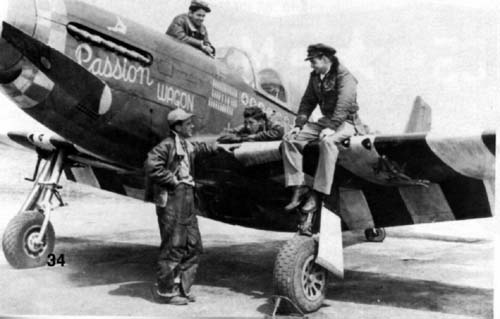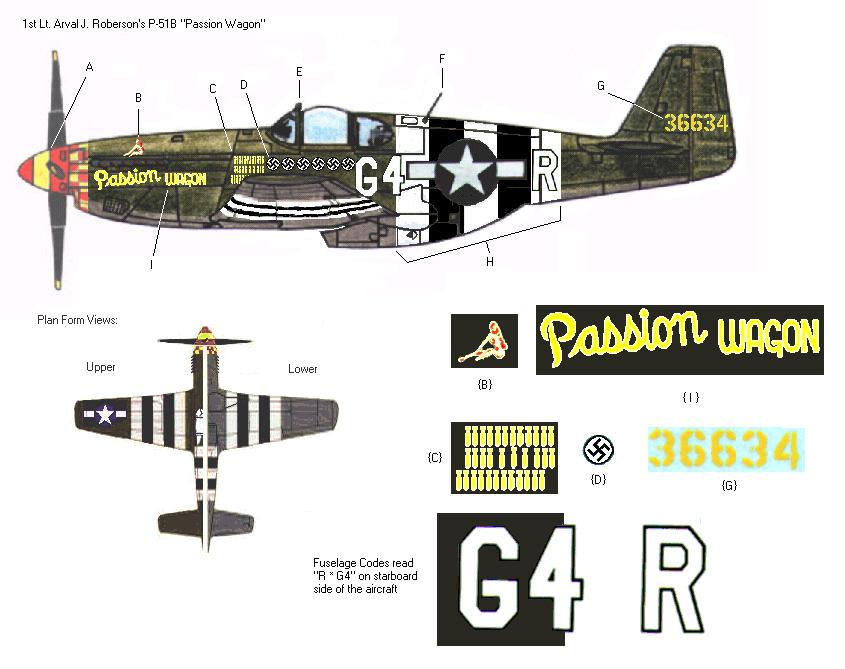357th FG Profile

Lt. Arval J. Roberson, P51B “Passion Wagon” 362nd FS, 6 Victories

Modeler Tips:
A. Rear red band on propeller boss extends onto spinner to leading edge of blades when in neutral pitch. Determine width of yellow band by dividing remainder of spinner evenly.
B. Provocative nose art sits on upper cowl seam with the model twisted at the waist and looking back over her left shoulder. Left leg bent at knee, right leg extended, left hand on right knee.
C. 24 bomb-style mission marks, note that three in center were not tightly grouped.
D. Six kill markings- black swastikas on white circles bordered in black.
E. Standard ETO round mirror, canopy framework left natural aluminum.
F. 3′ Wire whip antenna.
G. Tail Number- “36” on fin, “634” on rudder.
H. Full suite of invasion stripes, wings and fuselage- fuselage codes outlined in green where they overlap the
first and last stripes (fuselage codes read R * G4 and the “G”overlaps invasion stripes on starboard side).
I. The name “Passion Wagon” rendered in to typefaces- the word “Wagon” sits squarely within lower strip panel.
Overall Modeling Tips:
*Fuselage codes have been problematic for modelers since most decal manufacturers don’t provide an olive green outline for the characters. We’ve found that if you draw an outline for the codes onto the back
side of a piece of masking tape and place it exactly where the decal is to be placed it will leave a green area cut into the white invasion stripes. After the decals are affixed, you can use a fine brush to cut-in the spaces inside
the codes where the stripes show through.
*Apply mission marks, victories, and fuselage codes from nose tail ward to
ensure proper spatial relationships.
*After building several 357th A/C over the past 30 years, I recommend painting the nose area forward of the exhaust cutout yellow when the flat features are painted. Carefully cut away the yellow squares from the checkerboard decal and apply the remaining strip of red checkers to the nose. This method significantly reduces the potential for bubbles, and wrinkles plus it makes exact alignment of the decal easier.
*Prior to assembly, wash clear plastic parts with a mild glass cleaner and gently wipe dry. Then use a Q-Tip to evenly spread clear liquid floor wax (Future Brand seems to get the best results) on both inside & outside.
Protect from dust and let dry for at least 2 hours. The wax fills in microscopic flaws and creates an even gloss that is clearer & shines brighter than the original plastic underneath.
ProModeler Decal Sheet 88100300200

